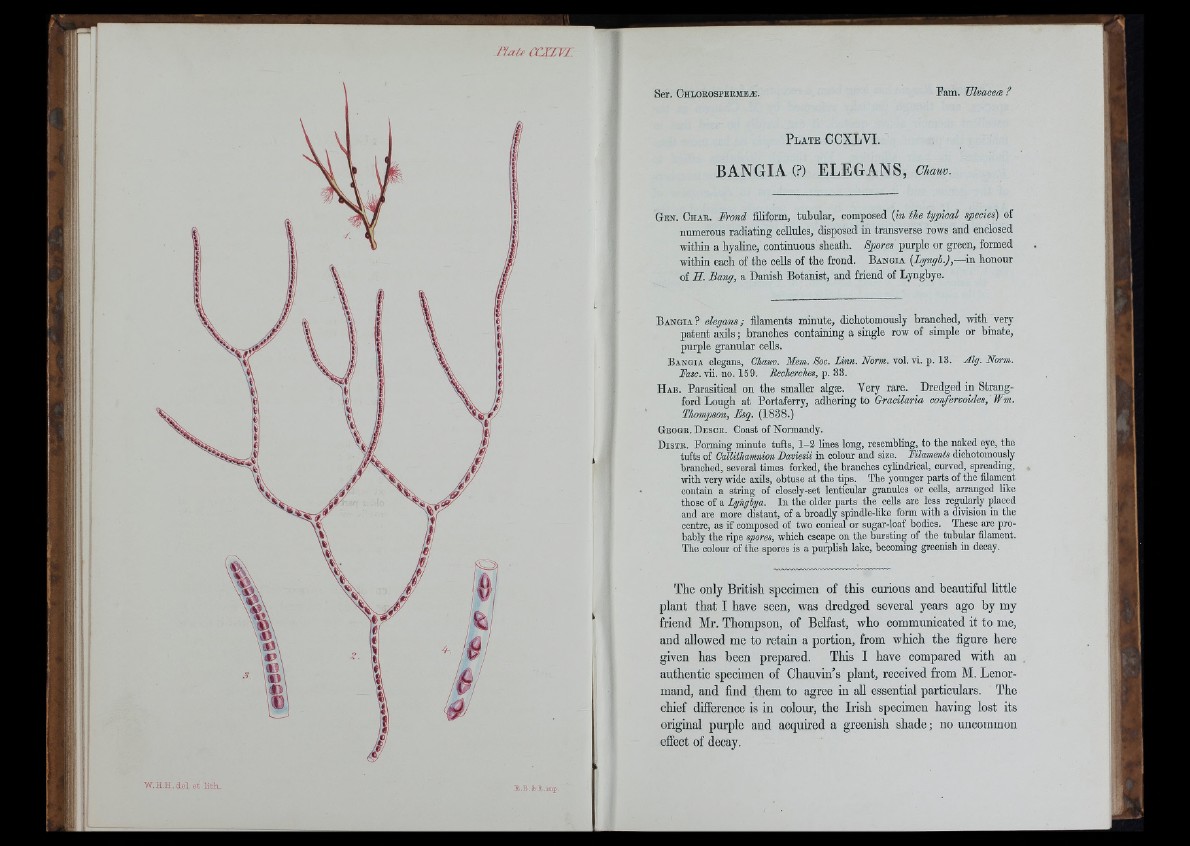
P la t e CCXLVI.
BANGIA (?) ELEGANS, Cham.
G en. Ch a e . Frond fiKform, tubular, composed [in the typical species) of
numerous radiating cellules, disposed in transverse rows and enclosed
within a hyaline, continuous sheath. Spores purple or green, formed
within each of the ceUs of the frond. B angia (Lyngh.),—in honour
of I I. Bang, a Danish Botanist, and friend of Lyngbye.
B a n g ia ? elegans; fflaments minute, dichotomously branched, with very
patent axils; branches containing a single row of simple or binate,
purple granular cells.
B a n g ia elegans, Cham. Mem. Soc. Linn. Norm. vol. vi. p. 13. Alg. Norm.
Base. vii. no, 159. Secherches, p. 33.
H ab. Parasitical on the smaller algae. Very rare. Dredged in Strang-
ford Lough at Portaferry, adhering to Gracilaria confervoides, Wm.
Thompson, Esq. (1838.)
Geoge. Desck. Coast of Normandy.
D is te . Forming minute tufts, 1 -3 lines long, resembling, to the naked eye, the
tufts of Oallithamnion Daviesii in colour and size. Filaments dichotomously
branched, several times forked, the branches cylindrical, curved, spreading,
with very wide axils, obtuse at the tips. The younger parts of the filament
contain a string of closely-set lenticular granules or cells, arranged like
those of a Lyngbya. In the older parts the cells are less regularly placed
and are more distant, of a broadly spindle-hke form with a division in the
centre, as if composed of two conical or sugar-loaf bodies. These are probably
the ripe spores, which escape on the bursting of the tubular filament.
The colour of the spores is a pui-plish lake, becoming greenish in decay.
The only British specimen of this curious and beautiful little
plant that I have seen, was dredged several years ago by my
friend Mr. Thompson, of Belfast, who communicated it to me,
and allowed me to retain a portion, from which the figure here
given has been prepared. This I have compared with an
authentic specimen of Chauvin’s plant, received from M. Lenor-
mand, and find them to agree in all essential particulars. The
chief difference is in colour, the Irish specimen having lost its
original purple and acquired a greenish shade; no uncommon
effect of decay.